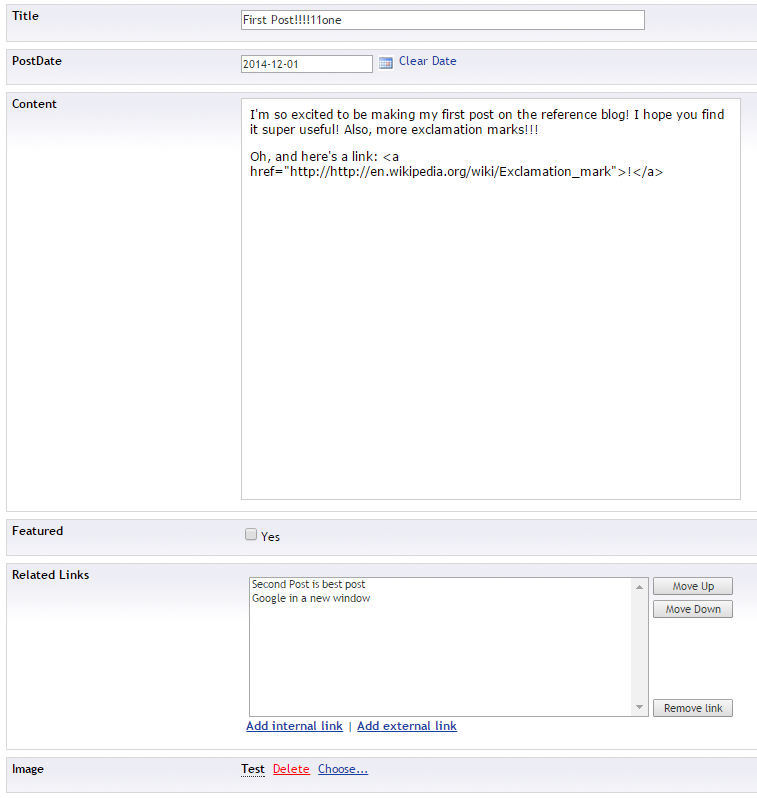-
Notifications
You must be signed in to change notification settings - Fork 6
Media Objects
Media objects are treated just like regular Umbraco model objects, but need a special annotation to indicate that they are media items instead of documents. This is due to the way that Umbraco handles Media in its backend.
First we need to create a baseline media object in Umbraco that we can map media items to. We have not included a default Media object because custom properties will almost always be added, and it is trivial to make your own.
Here is a sample Media POCO you would use to map Umbraco media items to:
[UmbracoMediaEntity(AutoMap = true)]
public class UmbracoImage
{
[UmbracoProperty(Alias = "umbracoFile")]
public string Url { get; set; }
public string Alt { get; set; }
}The UmbracoMediaEntity is the special dention that indicates this should map to a Media item and not a Document item.
Consider a simple blog post document in Umbraco:

Mapping to the image would be as simple as including the Image reference in your Blog post C# object.
[UmbracoEntity(AutoMap = true)]
public class BlogEntryViewModel
{
public string Title { get; set; }
public DateTime PostDate { get; set; }
[UmbracoRichTextProperty]
public string Content { get; set; }
public bool Featured { get; set; }
public UmbracoImage Image { get; set; } //The image class referenced above
}